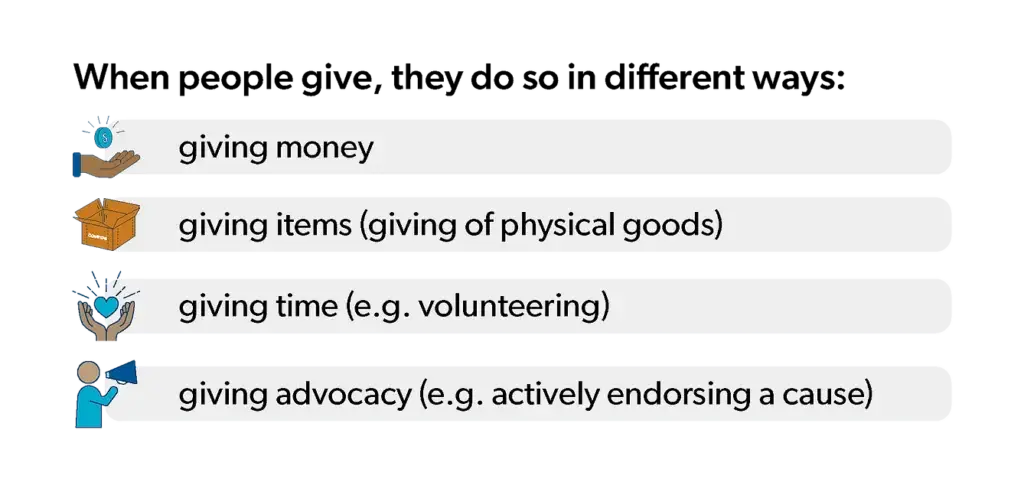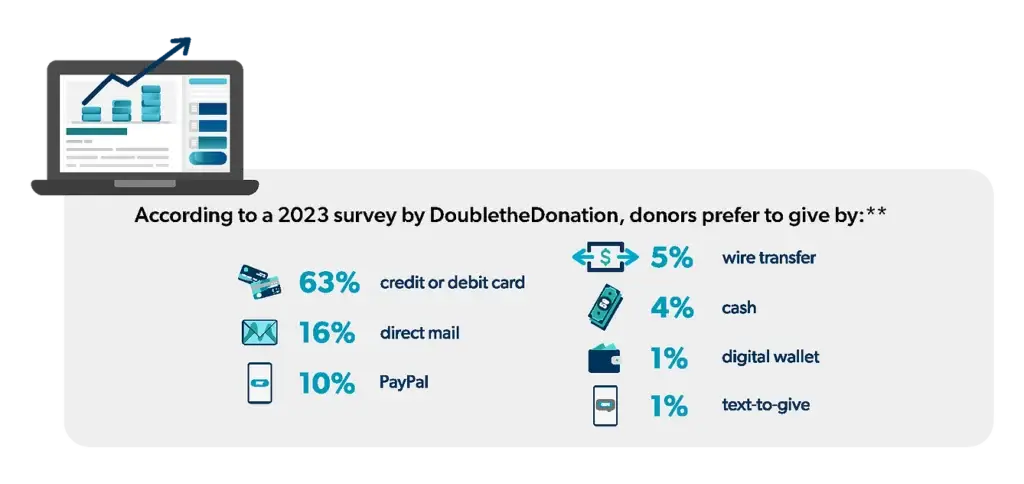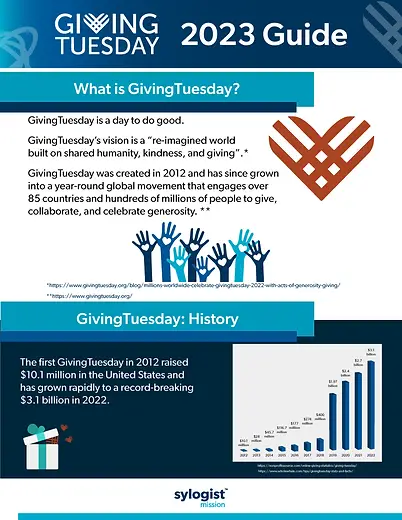7 Insights on Donor Behavior NPOs Can Learn from GivingTuesday
The first GivingTuesday was held in 2012 and donors gave more than $10.1 USD in the United States. Since then, giving has grown exponentially and shows no signs of stopping. In 2022, over $3.1 billion was raised in the US, with over $1 billion given online.
1. Donors want to give more than just dollars.
Most donors give in more multiple ways, with only 8% of people surveyed in the US giving only money.


Additionally, people are far more likely to give money as part of a larger commitment to giving and affiliation with specific causes and organizations.*
2. The children are our future.
In 2022, younger generations were more generous than older generations, giving more often and in more ways.* Read more about donor behavior across generations in this blog post.

3. Building long-term, meaningful relationships with donors is key.
In the US, both the number of donors and total dollars given deceased in 2022. This is the first time this has happened since 2010.
4. Online fundraising is here to stay.
According to GivingTuesday, over 40% of donors in the USA, Canada, and the UK made a donation via the recipient’s website.*

While some older donors still prefer direct mail, the majority of donors expect to be able to donate to their favorite causes via online donation pages.
5. GivingTuesday lifts the whole giving season.
Organizations that promoted GivingTuesday activated 40-60% more donors over the whole end-of-year giving season than in previous years.*
6. GivingTuesday donors are sticky.
40% of GivingTuesday donors give again in the following years. GivingTuesday donors become monthly recurring donors at a slightly higher rate than those acquired from end-of-year giving campaigns.*

7. Donors are very generous at the end of the year.
30% of annual giving occurs in December.
10% of annual giving occurs in the last 3 days of the year.***
Now that we’ve explored the top seven insights we can draw for GivingTuesday donor data, it’s time to apply these lessons to your GivingTuesday and end-of-year campaigns. Read our next blog post: “Five Quick Ways to Optimize Your GivingTuesday Campaign“.

Sources:




